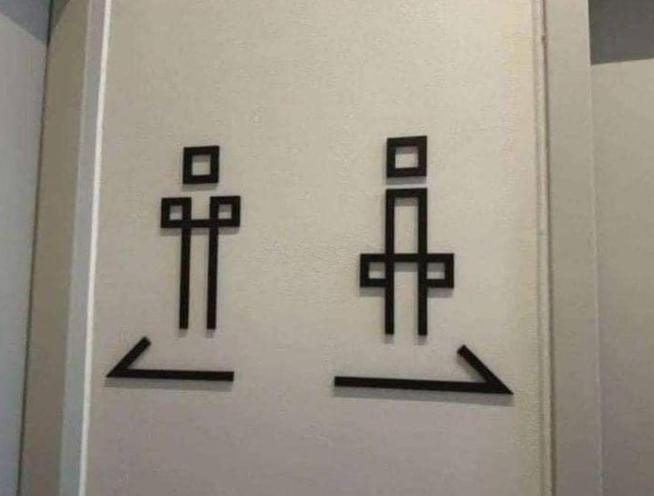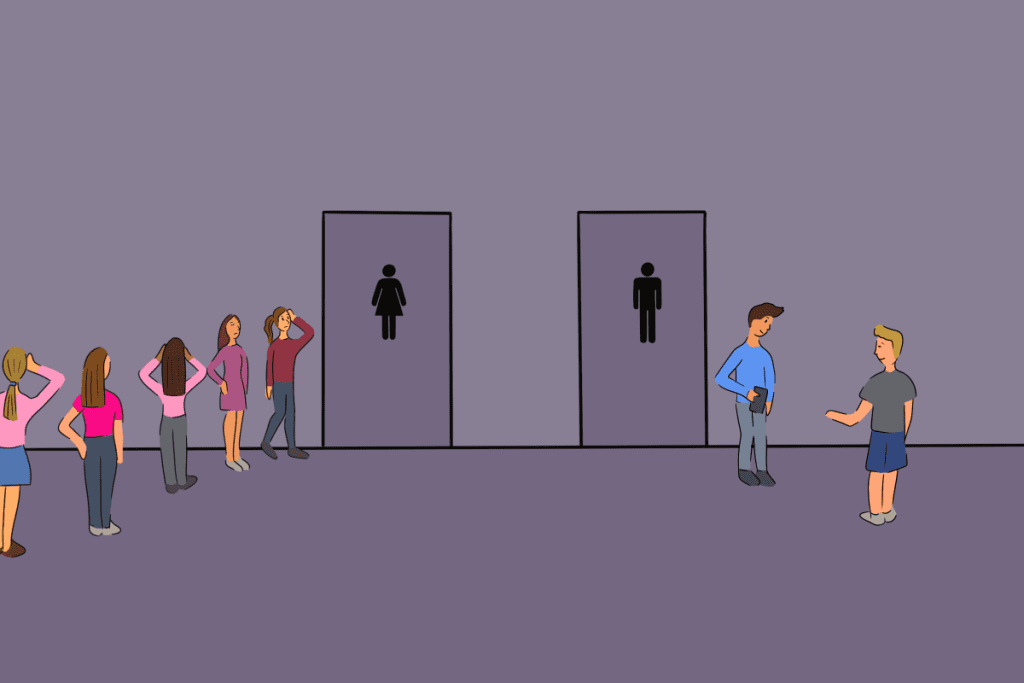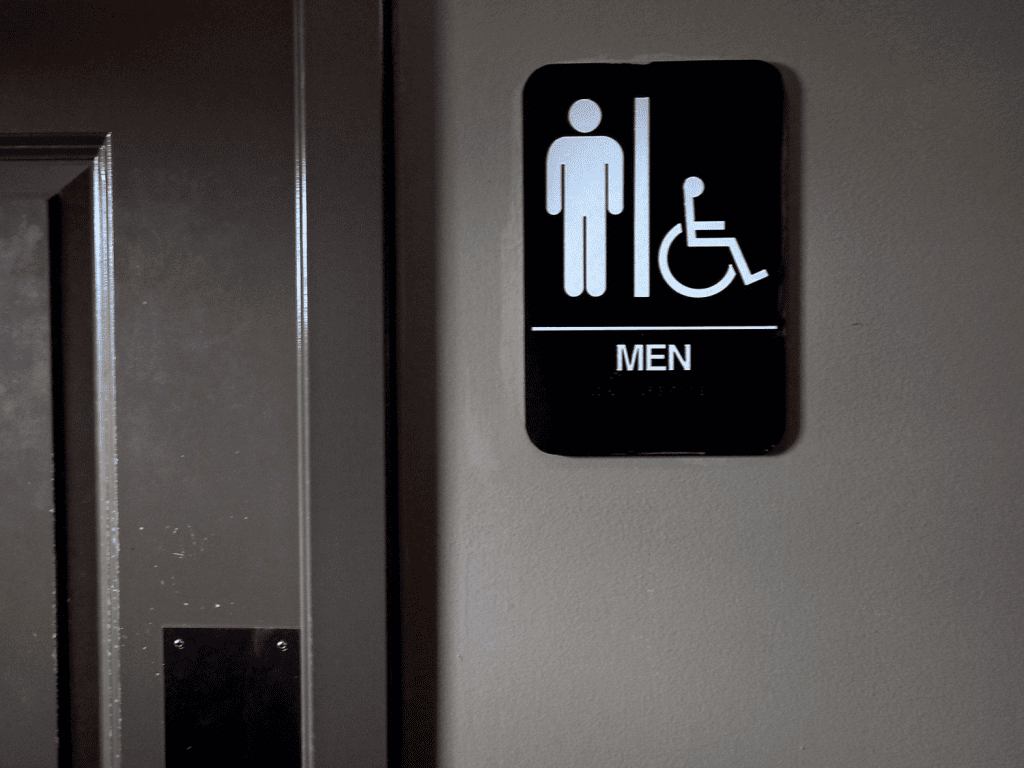Have you ever found yourself in an awkward situation, staring at restroom signs and feeling completely unsure of which door to choose? You’re not alone. This seemingly small conundrum has caused more than its fair share of confusion, leading to funny stories, mild embarrassment, and, occasionally, longer-than-expected waits. Let’s unpack this relatable scenario and explore the bigger picture behind restroom signage, human behavior, and modern design.
The Moment of Confusion: Why It Happens

Imagine standing outside two restroom doors with ambiguous signage—perhaps one with abstract symbols or illustrations that are far from intuitive. You pause, squint, and tilt your head, trying to decode which one matches your gender. The seconds stretch into minutes, and suddenly you realize you’ve been standing there long enough to attract a few curious glances.
So, what causes this confusion?
- Non-Standardized Icons: Some restrooms use creative or artistic depictions of men and women, veering far from the universally recognized stick figures. While well-intentioned, these designs often create ambiguity.
- Cultural Variations: Symbols or clothing styles can carry different connotations across cultures, making interpretation tricky for international travelers.
- Minimalistic Designs: Modern trends often favor minimalism, resulting in signs that strip away too many distinguishing details.
Breaking Down the Visual Cues
When faced with ambiguous restroom signage, most of us instinctively look for distinguishing visual traits. Traditionally, these include:
- Long Hair vs. Short Hair: A common shorthand for femininity and masculinity, though it’s far from universal.
- Clothing Differences: Dresses or skirts often symbolize women, while pants or simpler designs signify men. Again, this relies on traditional gender norms.
- Facial Features: Softer curves for women, angular lines for men. But this assumption is fraught with inaccuracies.
Even these cues can fail, leaving you frozen in place and questioning your observational skills.
How Restroom Design Reflects Changing Norms
The world is evolving, and with it, so are perceptions of gender and identity. This evolution has directly influenced how public spaces, like restrooms, are designed.
1. Gender-Neutral Restrooms on the Rise
In an effort to accommodate all individuals, many establishments are adopting gender-neutral restrooms. These spaces eliminate the need for gendered signage altogether, offering a simple solution for those who don’t fit into traditional categories or who prefer a more inclusive option.
2. Creative Expression Meets Accessibility
Artistic restroom signs can be fun and memorable, but they should prioritize clarity. Overly abstract designs can exclude or confuse people, especially those unfamiliar with the symbols. The challenge is striking a balance between creativity and practicality.
3. Cultural Sensitivity in Design

Symbols need to be interpreted universally, regardless of cultural background. For instance, using hair length or clothing style as a primary identifier might not resonate in societies with differing norms around gender expression.
Tips for Navigating Restroom Ambiguity
If you ever find yourself stuck in front of two ambiguous restroom doors, here are some quick tips to save you time (and spare you the embarrassment):
- Look for Additional Clues: Beyond the symbols, many restrooms have written labels like “Men” or “Women.” If these are absent, check for subtle hints like door colors or placement of toiletries inside.
- Follow the Crowd: If it’s a busy area, observe where others are heading. When in doubt, ask someone nearby.
- Default to Gender-Neutral Options: If you’re unsure and there’s a gender-neutral restroom available, opt for that.
A Humorous Take on a Common Struggle
The confusion over restroom signage has inspired countless memes, jokes, and anecdotes. One popular example describes a person standing outside the doors for so long that someone else has to step in and clarify: “That one’s women; this one’s men.” The absurdity of the situation highlights how something as mundane as choosing a restroom can suddenly feel like a high-stakes decision.
The Broader Implications of Restroom Design

This seemingly small issue also speaks to larger societal themes, including:
- Inclusivity: Clear, inclusive designs help ensure everyone feels welcome and respected in public spaces.
- Empathy: Designing spaces with empathy means considering the needs of diverse users, from cultural backgrounds to gender identities.
- Functionality vs. Aesthetics: While innovative designs can enhance a space, they should never come at the cost of usability.
Conclusion
The next time you find yourself staring at restroom signs and feeling stumped, remember that you’re not alone. Ambiguous designs and evolving societal norms are part of a bigger conversation about inclusivity, clarity, and accessibility in public spaces.
Whether you’re navigating quirky signage or appreciating the rise of gender-neutral restrooms, this lighthearted dilemma serves as a reminder to approach life’s little confusions with humor and curiosity. After all, sometimes it’s the smallest challenges that make for the best stories.


